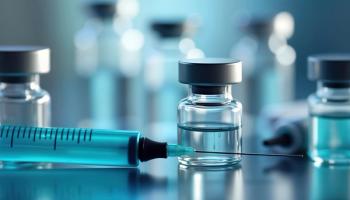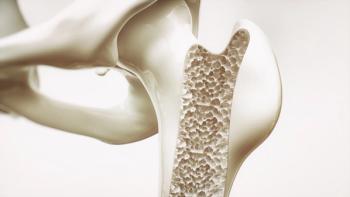
- Vol 28 No 7
- Volume 28
- Issue 7
How New Initiatives Could Affect Generic Drug Costs
Prices of more than 20% of generic drugs increased more than 100% between 2010 and 2015.
Generic drugs are not immune to price increases, and the problem is worsening.
Prices for these drugs fell 59% from the first quarter of 2010 through the second quarter of 2015, but prices for more than 20% of generic drugs increased more than 100% in the same time period, according to the Government Accountability Office (GAO).
The GAO considers lack of competition to be the primary driver of generic drug price increases. And in fact, the FDA reports that more than half of its approved generics are not being sold and another 14% are of “unknown marketing status.”
But experts say rising prices also can be attributed to pricing abuses, such as extending patents and exclusivity by branded drug manufacturers, and insufficient action by the FDA and government to ensure generic drugs are reviewed and approved for entry into the market.
The problem boils down to market dynamics, says Ken Majkowski, PharmD, chief pharmacy officer of FamilyWize, a community-based organization that offers a free prescriptions savings program. “Prices go up because pharmaceutical companies feel they can charge more and thus make more. They go down if there is increasing competition or threat of government intervention,” he says.
That is only the short list of challenges. Adding to the fray, are:
- Shortages of raw materials.
- Patent extensions by slightly tweaking products.
- Expenses associated with entering the marketplace.
- Backlogs of Abbreviated New Drug Applications (ANDAs).
- More brand drug manufacturers paying generic companies not to launch drugs, a tactic which the Federal Trade Commission estimates costs U.S. consumers and taxpayers $3.5 billion in higher drug costs annually.
- Circumstances in which the same product is sold under a generic name by the manufacturer of the branded product, enabling 180 days of exclusivity awarded to the first producer of a generic.
- Little incentive from PBMs to encourage drug manufacturers to lower prices because profits increase as drug prices do.
Erin Fox, senior director of drug information, University of Utah Health, also points to excessive price hikes, as was the case with Daraprim (pyrimethamine), when Turing CEO Martin Shkreli hiked up the price overnight from $13.50 to $750 a tablet-a 4,000% increase for a drug first approved in 1953.
She also is concerned about the unintended consequences of the FDA’s 2006 Unapproved Drugs Initiative, which removed unapproved drugs from the market. For example, intravenous vasopressin for hypotension received FDA approval in November 2014 under the name of Vasostrict (vasopressin Injection). After being marketed for nearly a century without FDA approval, no other manufacturers were allowed to produce the drug. Its price soared to $138.40 per vial from it original cost of $4.27, a 3,141% increase, says Fox.
Reason for optimism
In the early 1980s, the Federal Food, Drug, and Cosmetic Act enabled generic companies to receive regulatory approval for drugs by filing ANDAs, but few manufacturers took advantage.
As a result, the Drug Price Competition and Patent Term Restoration Act of 1984, better known as the Hatch-Waxman Act, was born, encouraging innovation in pharmaceutical research and development through incentives and helping generic drugs reach the market more quickly. At the same time, it allows drug patent owners to regain the time lost on a patent term while awaiting FDA approval.
To close the circle started by Hatch-Waxman, the industry awaits the enactment of the Creates Act (which is pending in Congress) and the implementation of many promises made by President Trump and FDA Commissioner Scott Gottlieb, MD.
The Creates Act would promote drug price competition by making it easier for medicines with patents that have expired to be sold as less expensive generic versions.
The Act would also override misuse of the Risk Evaluation and Mitigation Strategy (REMS) by brand drug manufacturers. Manufacturers have used limited distribution as an excuse to prevent access to samples by generic companies for bioequivalence testing. The Act makes it possible for generic manufacturers to sue in federal court to obtain samples.
In June 2017, the FDA published a list of off-patent, off-exclusivity branded drugs without approved generics and implemented a new policy to speed up the review of generic drug applications when competition is limited until there are three approved generics for a given branded drug.
This past January, the agency moved closer to reducing gaming by branded companies that could delay generic drug entry; resolving scientific and regulatory obstacles to approval of generic versions of certain complex drugs; and reducing the time it takes to get a new generic drug approved, primarily by facilitating fewer review cycles.
While 90% of non-generic drug applications receive approval in the first cycle of review, only 30% of generics make it through on the first try, according to the FDA. However, 2017 was a record year for generic drug approvals: 763 new generic versions of drugs-112 more than in 2016 and almost twice as many as in 2014.
Policy updates
The FDA is creating incentives for developing biosimilars and an easier process for their approval, and plans to issue new guidance on how to more efficiently handle citizen petitions to prevent delay of generic drug review. Developed by the FDA, these petitions allow individuals and community organizations to request changes to health policy. Branded drug manufacturers submit more than 92% of these petitions, according to the FDA.
On May 11, President Trump discussed drug pricing during a press conference. He reemphasized the need for competition and a need to prevent foreign countries from providing the same drugs at lower costs. He also stated his support for eliminating drug middlemen and speeding up the approval of generics.
Academy of Managed Care Pharmacy CEO Susan A. Cantrell, RPh, says there are several opportunities for addressing the rising cost of pharmaceuticals that were not included in the president’s blueprint, such as reducing barriers to the adoption of value-based contracting and encouraging real-world evidence to demonstrate the value and quality of prescription medications in improving patient outcomes.
Mari Edlin, a frequent contributor to Managed Healthcare Executive, is based in Sonoma, California.
Articles in this issue
over 7 years ago
Three Vaccine Developments Healthcare Execs Should Watchover 7 years ago
How Embedded Care Managers Reduce Readmissionsover 7 years ago
Six Technologies That Will Transform Healthcareover 7 years ago
Four Healthcare Executives Take On New Managed Care Rolesover 7 years ago
Top Four Causes of Female Mortality and Treatment AdvancesNewsletter
Get the latest industry news, event updates, and more from Managed healthcare Executive.






















































